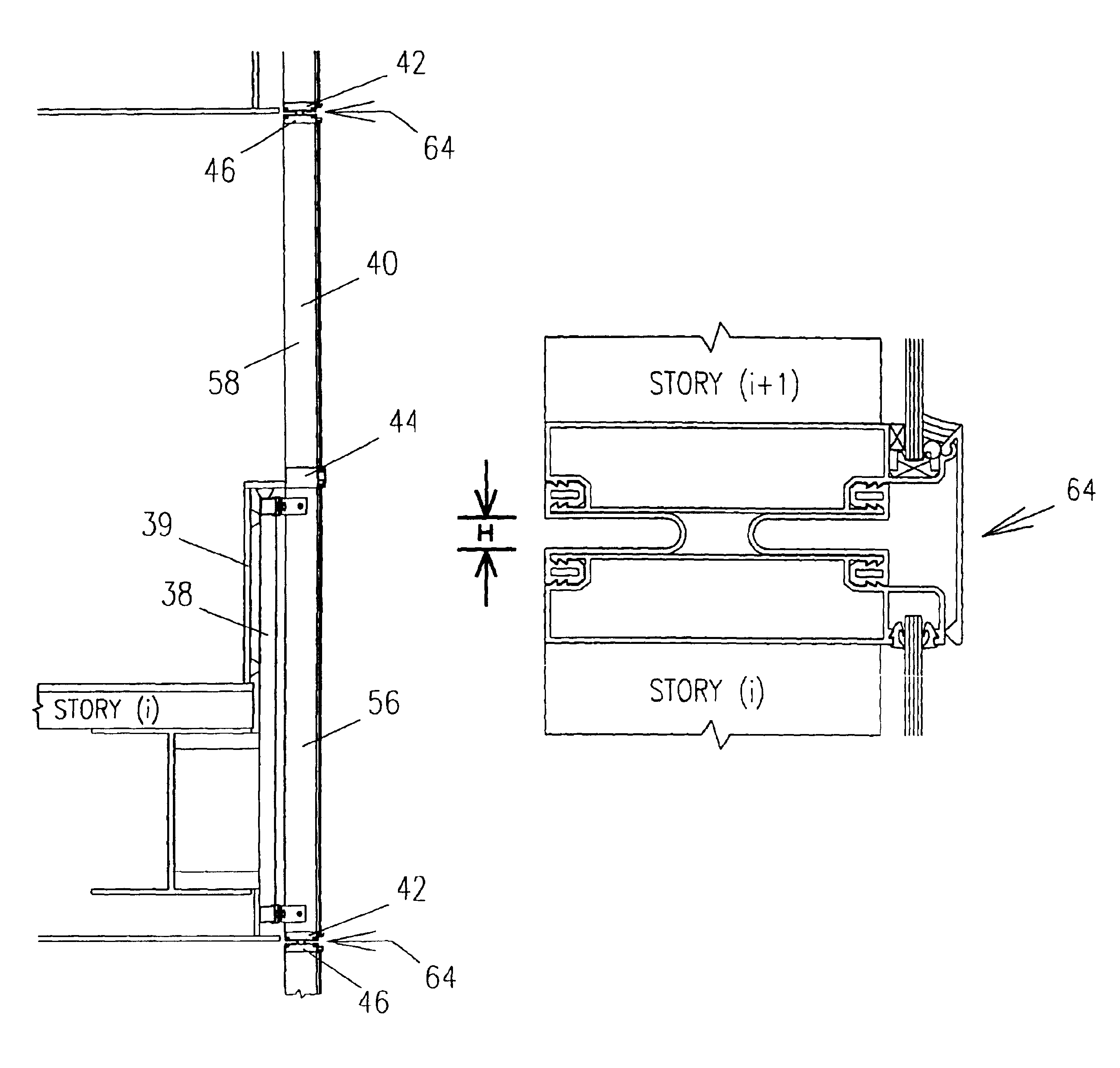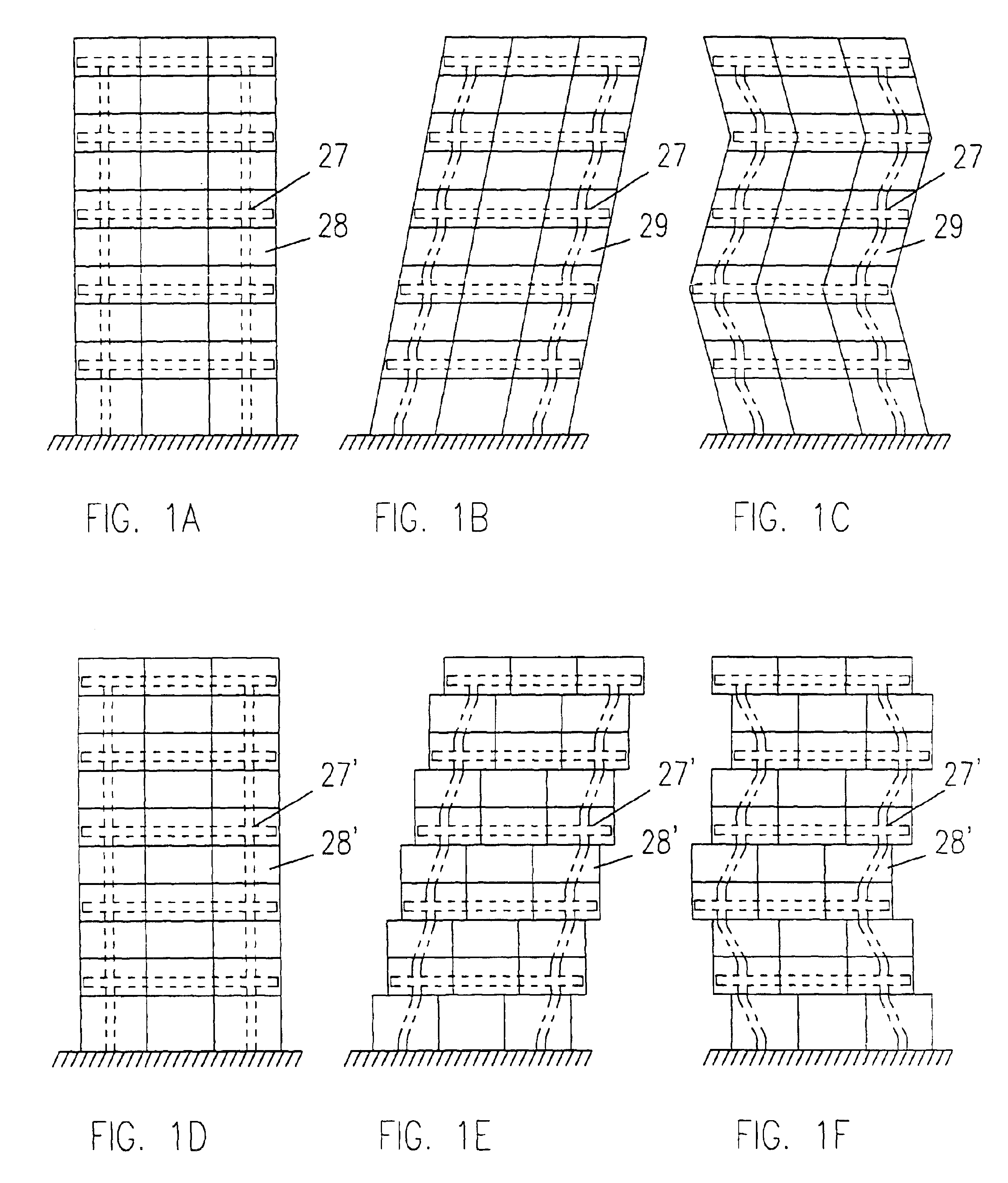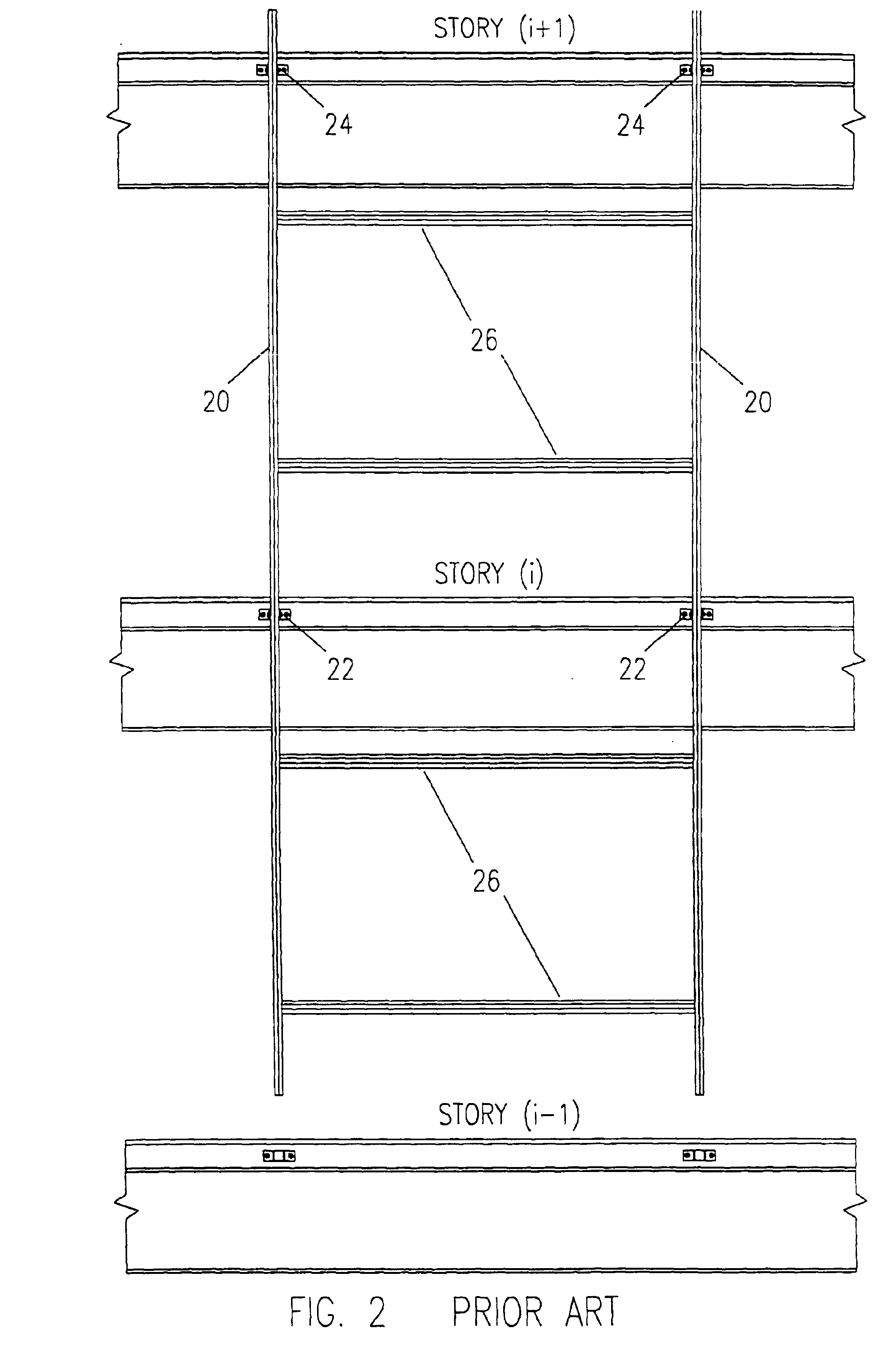Earthquake-immune curtain wall system
a curtain wall and earthquake technology, applied in the field of curtain wall systems, can solve the problems of brittle nature, inherently vulnerable to curtain wall movement, and the curtain wall system does not help the building stand upright, so as to minimize the damage to the wall system and the attendant risks. , the effect of high resistance to damag
- Summary
- Abstract
- Description
- Claims
- Application Information
AI Technical Summary
Benefits of technology
Problems solved by technology
Method used
Image
Examples
Embodiment Construction
[0035]Typical swaying motions of a conventional building frame 27 in response to earthquake-induced ground movements are shown schematically in FIGS. 1A, 1B and 1C. Particularly, FIG. 1A illustrates the building frame 27 in a normal, vertical position. FIG. 1B illustrates the building frame 27 in a first mode response. FIG. 1C illustrates the building frame 27 in a second mode response. Specific mode shapes of the building frame are affected by the flexural stiffness of the floor system relative to that of the columns. Regardless of the specific mode shape, interstory drift (the difference in horizontal displacement between adjacent stories in the building frame) is a primary cause of earthquake damage in conventional curtain wall systems. Earthquakes of low to moderate magnitude can cause expensive curtain will damage and loss of building envelope weather-resistant seals. More severe earthquakes can, in addition to the aforementioned damage and loss of serviceability, impose hazard...
PUM
 Login to View More
Login to View More Abstract
Description
Claims
Application Information
 Login to View More
Login to View More - R&D
- Intellectual Property
- Life Sciences
- Materials
- Tech Scout
- Unparalleled Data Quality
- Higher Quality Content
- 60% Fewer Hallucinations
Browse by: Latest US Patents, China's latest patents, Technical Efficacy Thesaurus, Application Domain, Technology Topic, Popular Technical Reports.
© 2025 PatSnap. All rights reserved.Legal|Privacy policy|Modern Slavery Act Transparency Statement|Sitemap|About US| Contact US: help@patsnap.com



